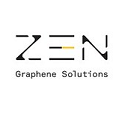SPONSOR: ZEN Graphene Solutions: An emerging advanced materials and graphene development company with a focus on new solutions using pure graphene and other two-dimensional materials. Our competitive advantage relies on the unique qualities of our multi-decade supply of precursor materials in the Albany Graphite Deposit. Independent labs in Japan, UK, Israel, USA and Canada confirm this. Click here for more information

- Metal-air batteries provide a sustainable and efficient solution to large scale adoption of electric vehicles

Graphene consists of a single layer of carbon atoms and yet is stronger than steel, possess exceptional electrical and thermal conductivity and is versatile, customizable, and has extraordinary uses that it can be put to. Since graphene came into limelight a decade ago it has faced major roadblocks in its large scale commercialization.
How Graphene Works in Metal Aid Batteries?
The electric revolution that we see today is largely due to significant advancements in lithium ion battery technology however large scale adoption has multiple bottlenecks such as limited energy density, concentration of lithium ores in certain locations and hazardous waste created during disposal of batteries. Metal air batteries provide a sustainable and efficient solution to large scale adoption of electric vehicles. The metal air batteries use a metal as anode, air (oxygen) as cathode and water as an electrolyte. A graphene rod is used in the air cathode of the batteries. Since Oxygen has to be used as the cathode, the cathode material has to be porous to let the air pass, a property in which graphene excels. The graphene used in the electrode is able to increase the battery efficiency by five times at one-third the cost.
What is the Use of Graphene in Oil Sorbent Pads?
Oil sorbent pad LSP20 uses graphene as an absorbing material; the porous structure of graphene is responsible for the high absorbance capacity of the pad. The pad is extremely light weight and has very high absorbance thus making it a cost effective and sustainable solution for oil spill industry.
According to the Composite Water Management Index (CWMI) report released by the Niti Aayog in 2018, 21 major cities are racing to reach zero groundwater levels by 2020, affecting access for 100 million people. However this acute water crisis is for fresh water reserves whereas water as a resource is abundantly available in the form of sea water, current desalination methods are extremely inefficient and consume large amounts of fossil fuels.
Among graphene’s host of remarkable properties, its hydrophobia is probably one of the traits most useful for water treatment. Graphene naturally repels water, but when narrow pores are made in it, rapid water permeation is allowed. This sparked ideas regarding the use of graphene for water filtration and desalination, especially once the technology for making these micro-pores has been achieved. Graphene sheets (perforated with miniature holes) are studied as a method of water filtration, because they are able to let water molecules pass but block the passage of contaminants and substances. Graphene’s small weight and size can contribute to making a lightweight, energy-efficient and environmentally friendly generation of water filters and desalinators.
The future of Graphene
However, 12 percent of India’s population is already living the ‘Day Zero’ scenario, thanks to excessive groundwater pumping, an inefficient and wasteful water management system and years of deficient rains. The CWMI report also states that by 2030, the country’s water demand is projected to be twice the available supply, implying severe water scarcity for hundreds of millions of people and an eventual six per cent loss in the country’s GDP.
Air filtration is another major sector where properties of graphene can result in developing efficient and effective products. The current technologies in air purification use adsorption and filtration, however when the adsorbent material reaches saturation limit it must be replaced. Graphene nano composites offer excellent adsorption and filtration properties thus making an effective air filter.
Source: https://www.entrepreneur.com/article/339158
SPONSOR: ZEN Graphene Solutions: An emerging advanced materials and graphene development company with a focus on new solutions using pure graphene and other two-dimensional materials. Our competitive advantage relies on the unique qualities of our multi-decade supply of precursor materials in the Albany Graphite Deposit. Independent labs in Japan, UK, Israel, USA and Canada confirm this. Click here for more information
Tags: #Additive, #Albany, #Bulk, #Concrete, #Europe, #graphite, #Highpurity, #Sample, #ZEN, #ZENGrapheneSolutions